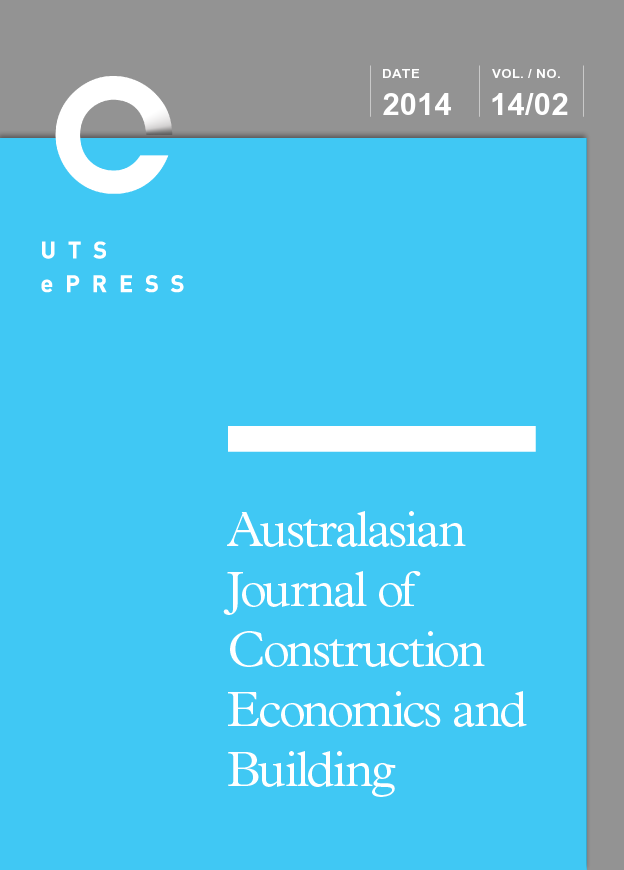Human resource management in the construction industry – Sustainability competencies
Main Article Content
Abstract
While environmental sustainability has been the subject of much debate in the last decade, it was not until recently that attention started to shift towards human resource management as an enabler for sustainability. Yet, this is still a relatively under researched area. Much is still unknown about the role of an individual worker in contributing towards sustainable development. This paper addresses the gap by proposing a framework to measure sustainability competencies of employees within the construction industry sector. As part of the framework, four proficiency levels together with relevant descriptions are defined for a total of eight sustainability competencies. Suggested proficiency levels are then mapped to main construction related jobs based on the framework. An example is also given to illustrate the manner in which competencies should be assessed. This framework is original and of practical use to construction managers and human resource practitioners.
Article Details

This work is licensed under a Creative Commons Attribution 4.0 International License.
Authors who publish with this journal agree to the following terms:
a) Authors retain copyright and grant the journal right of first publication with the work simultaneously licensed under a Creative Commons Attribution License that allows others to share and adapt the work with an acknowledgement of the work's authorship and initial publication in this journal.
b) Authors are able to enter into separate, additional contractual arrangements for the non-exclusive distribution of the journal's published version of the work (e.g., post it to an institutional repository or publish it in a book), with an acknowledgement of its initial publication in this journal.
c) Authors are permitted and encouraged to post their work online (e.g., in institutional repositories or on their website) prior to and during the submission process, as it can lead to productive exchanges, as well as earlier and greater citation of published work (See The Open Access Citation Advantage Service). Where authors include such a work in an institutional repository or on their website (ie. a copy of a work which has been published in a UTS ePRESS journal, or a pre-print or post-print version of that work), we request that they include a statement that acknowledges the UTS ePRESS publication including the name of the journal, the volume number and a web-link to the journal item.
d) Authors should be aware that the Creative Commons Attribution (CC-BY) License permits readers to share (copy and redistribute the work in any medium or format) and adapt (remix, transform, and build upon the work) for any purpose, even commercially, provided they also give appropriate credit to the work, provide a link to the license, and indicate if changes were made. They may do these things in any reasonable manner, but not in any way that suggests you or your publisher endorses their use.
References
Bratton, J. and Gold, J. 2003, Human Resource Management Theory and Practice 3rd Edition, Palgrave Macmillan, UK.
Centre for International Economics Canberra and Sydney 2007, ‘Embodied carbon metrics will avoid higher than desired carbon content and additional costs’, London, viewed 24 March 2012,
CRC Construction Innovation 2004, ‘Construction 2020: a vision for Australia’s property and construction industry, Australia, viewed 19 March 2012,
Dahl, A. L. 2012, ‘Achievements and gaps in indicators for sustainability, Ecological Indicators, 17, 14-19.
Deming, W. E. 1982, Out of the crisis: Quality Productivity and Competitive Position, Cambridge University Press, Cambridge.
Dingsdag, D. P., Biggs, H. C. Sheahan, V. L. and Cipolla, D. J. 2006, ‘A construction safety competency framework: improving OH&S performance by creating and maintaining a safety culture’, CRC for Construction Innovation, Brisbane, Queensland.
Druker, J. and White, G. 2002, ‘Misunderstood and undervalued? Personnel management in construction’, Human Resource Management Journal, 5 (3), 77-91.
Dunphy, D. and Griffiths, A. 1998, The Sustainable Corporation, Allen Unwin, Sydney.
Harmon, J., Fairfield, K. D. and Wirtenberg, J. 2010, ‘Missing an opportunity: HR leadership and sustainability’, People and Strategy, 33 (1), 16-21.
Loosemore, D., Dainty, A. and Lingard, H. 2003, Human Resource Management in Construction Projects: Strategic and Operational Approaches, Spon Press, New York.
McGregor, D. 1960, The Human Side of Enterprise: McGraw-Hill, New York.
Newell, S. and Shackleton, V. 2000, Recruitment and Selection, Blackwell Publishers Ltd, UK.
Spooner, K. and Kaine, S. 2010, ‘Defining sustainability and human resource management’, International Employment Relations Review, 16 (2), 70-81.
Storey, J. 1992, Developments in the Management of Human Resources, Blackwell Publishers Ltd, Oxford, UK.
Wilkinson, A., Hill, M. and Gollan, P. 2001, ‘The sustainability debate’, International Journal of Operations and Production Management, 21 (12), 1492-1502.
Wirtenberg, J., Harmon, J. , Russell, W. G. and Fairfield, K. D. 2007, ‘HR’s role in building a sustainable enterprise: insights from some of the world’s best companies’, Human Resource Planning, 30 (1), 1-13.
